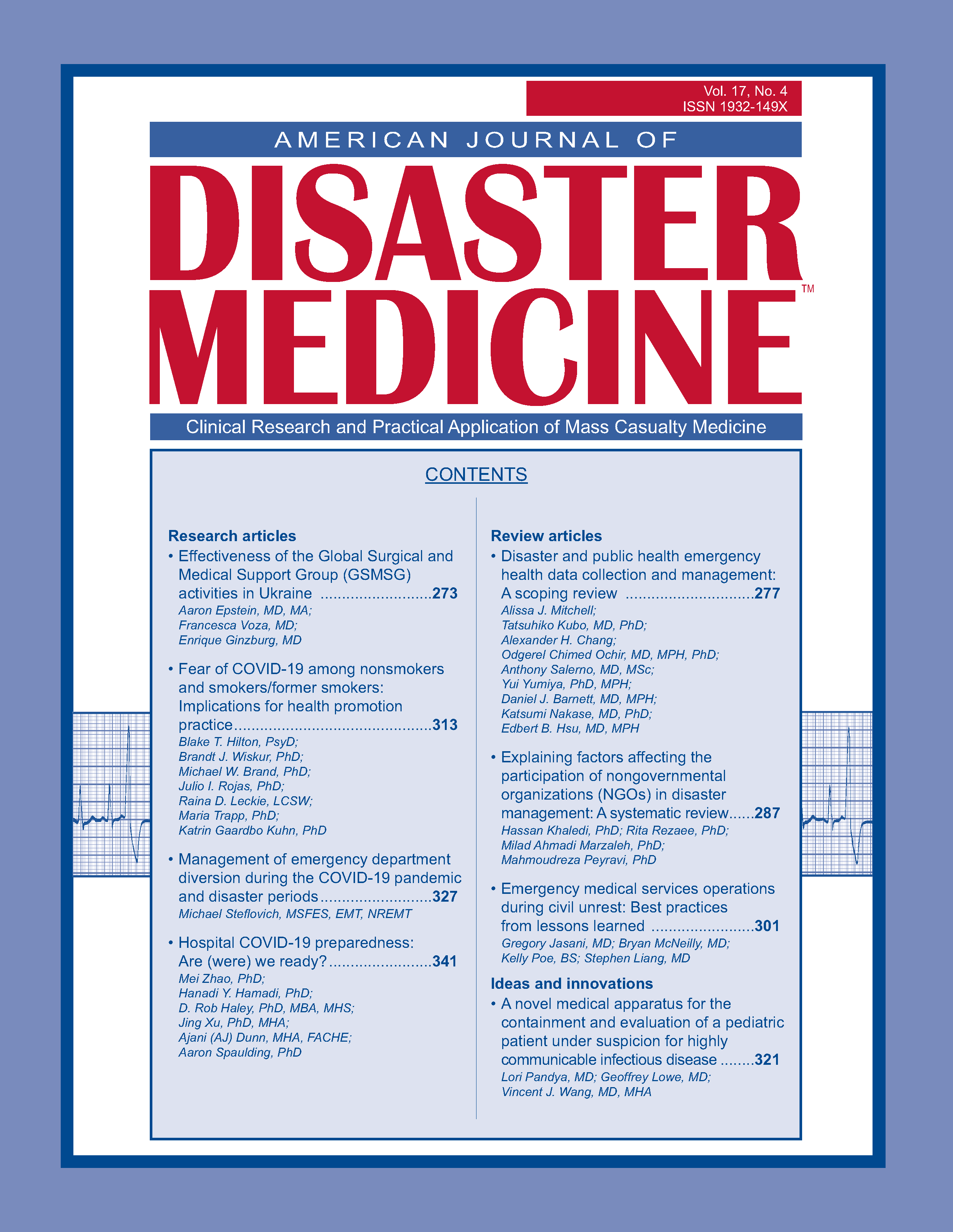A novel medical apparatus for the containment and evaluation of a pediatric patient under suspicion for highly communicable infectious disease
DOI:
https://doi.org/10.5055/ajdm.2022.0447Keywords:
pediatrics, COVID-19, emergency department, infectious disease, personal protective equipment (PPE)Abstract
Background: Highly communicable infectious diseases (HCIDs) such as severe acute respiratory syndrome coronavirus 2 (SARS-CoV-2) and Ebola are a containment challenge for the emergency department (ED). Donning and doffing personal protective equipment is necessary to protect healthcare workers but is time consuming and rife with errors. Furthermore, children present an additional containment challenge since they are often unable to follow directions or be separated from family members. To address these challenges, a novel child-friendly medical apparatus was developed for the rapid containment and evaluation of a HCID patient in the ED.
Objectives: The primary objective was to determine if routine emergency triage procedures (vital signs and basic physical examination) can be performed using this medical apparatus. The secondary objective was to determine if invasive procedures (bagvalve-mask ventilation and endotracheal intubation) can be performed.
Design: This was a prospective pilot study. A clear acrylic apparatus was built containing arm ports with gloves, simulating a specialized HCID barrier. Emergency physicians attempted routine triage procedures on a healthy volunteer and invasive procedures using a simulation mannequin through this apparatus.
Results: Twenty-four physicians were enrolled. All physicians (100 percent) successfully obtained vital signs, auscultated heart/lung sounds, completed bag-valve-mask ventilation, and performed intubation through the apparatus.
Conclusions: This novel apparatus is a feasible tool in the rapid evaluation of a HCID patient in the ED. A future study is needed to assess protection and training using this apparatus.
References
World Health Organization: Coronavirus disease situation reports. Available at https://www.who.int/emergencies/diseases/novelcoronavirus-2019/situation-reports/. Accessed January 31, 2023.
Centers for Disease Control and Prevention: Ebola virus disease. Available at https://www.cdc.gov/vhf/ebola/index.html. Accessed January 30, 2023.
Gómez-Ochoa SA, Franco OH, Rojas LZ, et al.: COVID-19 in health-care workers: A living systematic review and meta-analysis of prevalence, risk factors, clinical characteristics, and outcomes. Am J Epidemiol. 2021; 190(1): 161-175.
Bergwerk M, Gonen T, Lustig Y, et al.: COVID-19 breakthrough infections in vaccinated health care workers. N Engl J Med. 2021; 385(16): 1474-1484.
Evans DK, Goldstein M, Popova A: Health-care worker mortality and the legacy of the Ebola epidemic. Lancet Glob Health. 2015; 3(8): e439-e440.
Suen LKP, Guo YP, Tong DWK, et al.: Self-contamination during doffing of personal protective equipment by healthcare workers to prevent Ebola transmission. Antimicrob Resist Infect Control. 2018; 7: 157.
Chughtai AA, Chen X, Macintyre CR: Risk of self-contamination during doffing of personal protective equipment. Am J Infect Control. 2018; 46: 1329-1334.
Abraham N, Jain A, Harrison D, et al.: A cost analysis of a county hospital emergency department’s Ebola virus disease preparedness. Ann Emerg Med. 2015; 66(4 Suppl. 1): S25.
Montauk TR, Kuhl EA: COVID-related family separation and trauma in the intensive care unit. Psychol Trauma. 2020; 12(S1): S96-S97.
Published
How to Cite
Issue
Section
License
Copyright 2007-2025, Weston Medical Publishing, LLC and American Journal of Disaster Medicine. All Rights Reserved.


